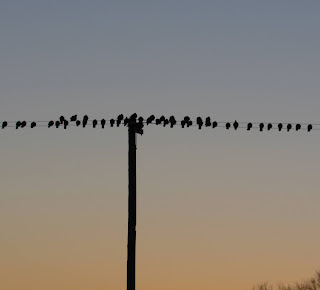From back in the day when I was an ag columnist....
What do the Neolithic period and the Bronze Age have in common, and what does that have to do with politics today?
Good question. I’m glad you asked.
The National Museum of Denmark says of the Neolithic period, “The Neolithic period covers the era 3900-1700 BC. The hunting people in Denmark had long had contact with the farming societies in central Europe, but only around 3900 BC the hunters began to till the land and keep animals. Wooded areas were cleared, burnt and replaced with fields of arable crops. Cattle, pigs and sheep appeared as domesticated animals.”
It is also the period wherein the first primitive examples of what is called “proto-writing” were found, as humans developed simple forms of markings for communication.
Even though early scratches on turtle shells didn’t quite match up to texting, not only did those hunters turned farmer begin to grow food instead of shooting or trapping it, they also began to drink milk from the animals they kept.
Science Daily reports that researchers have found evidence of milk protein in the mineralized dental plaque of seven people from that era who lived in what is now Great Britain.
“Lead author of the study, Dr Sophy Charlton, from the Department of Archaeology at the University of York, said: "The fact that we found this protein in the dental calculus of individuals from three different Neolithic sites may suggest that dairy consumption was a widespread dietary practice in the past.”
The fascinating article pointed out that the consumption of dairy products predates the genetic mutation that allowed at least some of us to be able to digest milk into adulthood. The authors theorized that either early farmers only drank small amounts of fluid milk or turned it into products, such as cheese, which have significantly reduced lactose content.
The relationship of this story to politics might seem a bit obscure. However, the animal rights movement certainly is politically motivated and they would have us believe that drinking milk from other animals is weird and unnatural. Yet we clearly started evolving our wildly successful, symbiotic relationship with milk producing mammals a very long time ago. It worked out pretty well for the survival of those milk producers...how else would they get to be kept in cozy barns, protected from wild predators, and pampered and cossetted all their lives? And how else would I get the delicious chunk of extra-sharp Cheddar I’m nibbling as I type this tale? They would probably have the cows and sheep and dairy goats go extinct and me eat some soybean concoction. I say no thanks, and the animals probably would too.
Which brings us to a somewhat more modern time, the Bronze Age. That is when our ancestors began making and using tools from bronze, which is created primarily by smelting copper with the addition of tin, and sometimes other metals. Bronze objects were harder than those made of previously available metals and thus came in pretty handy for sturdy nails and significant axe heads. The Bronze Age fell between the Stone Age, of which the Neolithic period was part, and the Iron Age, wherein humans learned to make even harder tools and weapons.
As early as the Neolithic period humans were feeding their infants and children milk from other mammals. By the time the Bronze Age rolled around it appears to have become a common practice, as evidenced by nifty little vessels from those periods unearthed by archaeologists all over Europe. The small clay pots were of a size comfortable for tiny hands and had spouts that scientists theorized would serve to supply food via suckling.An article from the Archaeology News Network showed photos of the “bottles” some of which were shaped like fanciful animals and even had legs to stand upon.
According to the article there was some skepticism as to whether the vessels were used to feed children at all or if they were used for nourishing sick people instead. Thus they analyzed the residual contents of such containers found in ancient graves of children in Bavaria. It was discovered that the bottles had contained the milk of domestic ruminants such as cows and sheep.
Thus not only did our early relatives begin domesticating and keeping cows and other ruminants from a very early time in order to drink their milk, so did they begin feeding their offspring such materials at an early stage in their lives.
Project partner, Dr Katharina Rebay-Salisbury from the Institute for Oriental and European Archaeology of the Austrian Academy of Science concluded in Archaeology News, "Bringing up babies in prehistory was not an easy task. We are interested in researching cultural practices of mothering, which had profound implications for the survival of babies. It is fascinating to be able to see, for the first time, which foods these vessels contained."
It’s fascinating to me that even Stone Age humans saw value in drinking milk and used it to help their children survive the stresses of weaning and subsequent primitive life.
It’s too bad that modern privileged humans want to reinvent the wheel when it comes to nutrition. Today’s vegan movement would have us forgo our historic relationships with animals and consume only plant material instead. According to the Conversation this is leading to a trend in developed and indeed wealthy countries of chronic hidden hunger as people crave micronutrients lost by following such unnatural diets. More than one in two children in the United States is deficient in vitamin D and E, while ¼ of children lack sufficient calcium or magnesium.
Guess what time-honored beverage contains all of those elements. You know the answer of course. Dairy milk.
So simple that even the cavemen knew it. Or if not cavemen at least some really early humans.



























